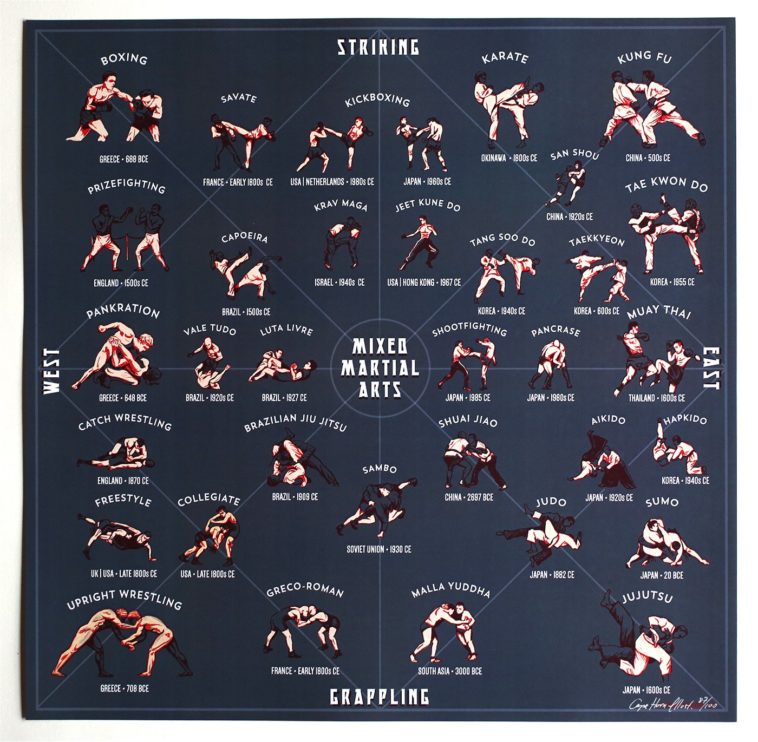Discover The Secrets Of Taekwondo's Belt Degrees! From White To Black, This Guide Has Everything You Need To Know. Dive In Now!
Discover The Secrets Of Taekwondo's Belt Degrees! From White To Black, This Guide Has Everything You Need To Know. Dive In Now!
Blog Article
Write-Up By- what are the different martial arts
Did you recognize that there are a total amount of 10 belt degrees in Taekwondo? From the novice's white belt to the distinguished black belt, each degree stands for a landmark in your trip to mastery.
However what do these belt levels really mean? How do https://best-type-of-martial-arts11098.activoblog.com/36706983/starting-a-trip-of-excellence-martial-arts-training-academy advance via them?
In this discussion, we will certainly break down the belt levels in Taekwondo, discover their relevance, and reveal what it takes to increase via the ranks.
So, if you're curious to understand the complexities of Taekwondo's belt system and what it implies for your training, remain tuned.
The Purpose of Belt Degrees
The function of belt degrees in Taekwondo is to supply a clear and structured progression system for you to track your advancement and ability degree. As you begin your Taekwondo trip, you begin with a white belt, signifying your newbie condition. With each belt promotion, you obtain new knowledge, techniques, and duties.
The belt degrees work as turning points, showing your commitment, commitment, and growth in the martial art. They offer a feeling of accomplishment and motivation to keep pressing yourself to enhance. Additionally, belt levels aid trainers and peers assess your capacities and provide proper advice and training.
Belt Color Styles and Their Definitions
As you advance through the belt levels in Taekwondo, each shade represents a details significance and symbolizes your growth in the martial art.
The white belt, which is the beginning point for all newbies, represents pureness and innocence.
As you proceed to the yellow belt, it represents the earth where a plant sprouts and settles.
The green belt represents development and the growth of your skills.
Heaven belt indicates the skies, where your potential as a Taekwondo professional is infinite.
The red belt represents threat and caution, advising you to utilize your abilities sensibly.
Finally, the black belt represents mastery and know-how, symbolizing your journey in the direction of coming to be a true Taekwondo master.
Each belt shade holds its very own unique meaning, mirroring your development and devotion in this ancient fighting style.
Progressing Via the Belt Levels
To progress via the belt degrees in Taekwondo, you need to regularly show your abilities and commitment. Here's what you need to understand about advancing in this martial art:
1. ** Practice Makes Perfect **: Regular training sessions are necessary to enhance your technique and master the necessary types. Repeating https://www.kansas.com/news/business/biz-columns-blogs/carrie-rengers/article254283463.html , permitting you to perform with precision and rate.
2. ** Pressing Your Limits **: Progressing with the belt levels calls for pressing on your own past your comfort area. best martial arts for older students 'll be tested physically and emotionally, but it's via these obstacles that you expand and improve.
3. ** Examining Your Knowledge **: Belt tests review your understanding of Taekwondo principles, including sparring, self-defense, and damaging techniques. These examinations ensure you have a comprehensive understanding of the art and are ready to progress to the next degree.
Conclusion
As you start your journey through the belt degrees in Taekwondo, remember that each color holds a much deeper definition past its surface area appearance.
Just like the dynamic shades of the belts, your development stands for development, self-control, and determination.
As you progress, each belt becomes a sign of your devotion and mastery of the art.
Embrace the challenge, press your restrictions, and allow the meaning of your belt degrees influence you to end up being the best version of yourself both on and off the floor covering.
